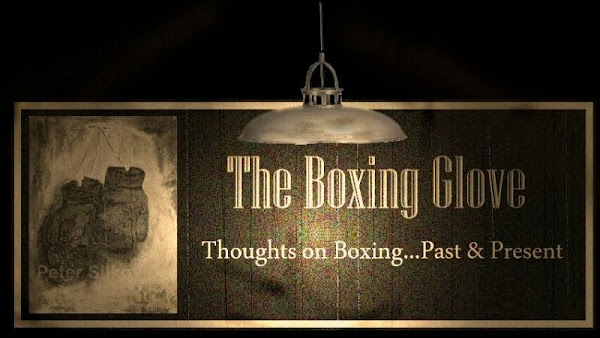By Peter Silkov
The Barclays Center in Brooklyn, New York, was witness last night, July 30, to one of the fights of the year, as challenger, Carl Frampton (23-0, 14koes), produced the performance of his career, to tear the WBA world featherweight championship away from Leo Santa Cruz (32-1-1, 18koes.) In a match that, for a change, lived up to all expectations, as Frampton proved to be the better all-round boxer, and was able to control the action more, especially in the early rounds.
 |
| Photo: Beacher Report |
The fight started fast and kept up a good pace all the way throughout its 12 rounds. The key to Frampton’s victory was the balance that he was able to achieve, between using his superior boxing skills to frustrate and negate Santa Cruz, and his ability to stand and trade with Santa Cruz when he had to. Most telling was that Frampton was able to hurt the champion, staggering him in the 2nd round, after which Santa Cruz was always a little circumspect in his attacks. Frampton’s jab was also an important weapon in this match, as it allowed him to score points, and keep the defending champion from launching his usual non-stop attacks. The match featured a number of exciting exchanges, but Santa Cruz was unable to build up the kind of non-stop windmill attacks for which he is most known. Frampton’s intelligent use of the ring and his accurate and potent counter attacks saw him build up a clear lead in the first half of the fight.
In the second half of the match, Santa Cruz, realizing that he was behind, stepped things up and tried to drag Frampton into the kind of toe-to-toe action that would suit him more. Frampton traded punches well and kept his boxing together to emerge a deserving winner. The scores were 117-111, 116-112, and 114-114. The Boxing Glove scored the fight 115-113. After the fight, an unhappy Santa Cruz indicated that the pro-Frampton crowd had influenced the judges, and that he wanted a rematch in Los Angeles. This is certainly a fight that could be done again, whether it will be though is another thing entirely. Frampton now will have a number of lucrative options for his future fights and is liable to take his time before jumping into a rematch with Santa Cruz.
In the second half of the match, Santa Cruz, realizing that he was behind, stepped things up and tried to drag Frampton into the kind of toe-to-toe action that would suit him more. Frampton traded punches well and kept his boxing together to emerge a deserving winner. The scores were 117-111, 116-112, and 114-114. The Boxing Glove scored the fight 115-113. After the fight, an unhappy Santa Cruz indicated that the pro-Frampton crowd had influenced the judges, and that he wanted a rematch in Los Angeles. This is certainly a fight that could be done again, whether it will be though is another thing entirely. Frampton now will have a number of lucrative options for his future fights and is liable to take his time before jumping into a rematch with Santa Cruz.
 |
| Photo: The Guardian |
For all the criticism that he has had (deservedly so) leveled at him due to his avoidance of Guillermo Rigondeaux, and his performances in his last two fights, Frampton performed brilliantly last night, showing guts, strength, and skill. Santa Cruz, on the other hand, showed why he is a good fighter rather than a great fighter, as he was exposed as being one-dimensional at times against the Irishman.
Certainly this was a career-best performance so far from Frampton, and indicated that the extra weight at featherweight may well make him a better fighter, than he was at super-bantamweight. Watching Frampton’s performance, it become even more disappointing that he has been steered away from a match with Gullermo Rigondeaux.
It is hard not to feel sympathy for the exiled Cuban, who has spent the past couple of years searching for fights, while fighters whom he is very capable of beating, fight each other instead of him, for purses he is probably still dreaming about.
Yes boxing is a business, a very cruel business. The biggest loser of last night’s fight was neither of the two boxers in the ring.
Certainly this was a career-best performance so far from Frampton, and indicated that the extra weight at featherweight may well make him a better fighter, than he was at super-bantamweight. Watching Frampton’s performance, it become even more disappointing that he has been steered away from a match with Gullermo Rigondeaux.
It is hard not to feel sympathy for the exiled Cuban, who has spent the past couple of years searching for fights, while fighters whom he is very capable of beating, fight each other instead of him, for purses he is probably still dreaming about.
Yes boxing is a business, a very cruel business. The biggest loser of last night’s fight was neither of the two boxers in the ring.
 |
| Photo: belfastlive.co.uk |
With this win, Frampton annexed the same WBA world featherweight championship that was won by his manager and mentor, Barry McGuigan, back in 1985. After Frampton had been declared the winner, McGuigan, who had been an emotional spectator of the fight at ringside, was finally overcome, and in tears. After the let down of the Quigg match, this was finally a fight and a performance to be proud of ,and one which is likely to make Frampton an international star.
On the under card of the Santa Cruz vs. Frampton showdown, Mikey Garcia (35-0, 27koes) made his long awaited return to the ring, after being sidelined for over two and a half years, by a bitter legal dispute with his former promoters, Top Rank.
On the under card of the Santa Cruz vs. Frampton showdown, Mikey Garcia (35-0, 27koes) made his long awaited return to the ring, after being sidelined for over two and a half years, by a bitter legal dispute with his former promoters, Top Rank.
 |
| Photo; Edward Diller/DiBella Entertainment |
In one of the performances of the night, Philadelphian, Tevin Farmer (21-4-1, 5koes), gave favourite Ivan Redkach (19-1-1, 15koes) a 10 rounds boxing lesson, winning 99-89, 98-92, 98-92. Farmer only started boxing at the age of 19 and turned professional at the age of 21 in 2011. He lost 4 of his first 12 fights (with one draw and 7 wins), but instead of taking the road of becoming a journeyman, he has now won his last 15 contests in a row. His win over Redkach has shown he is a genuine world class talent. Farmer’s victory was even more impressive given that he usually fights at junior lightweight. This is definitely a boxer to keep an eye upon.
Paulie Malignaggi (35-7, 7koes) scored a 96-94, 98-92 and 98-90 10 rounds point’s win over Gabriel Bracero (24-2, 5koes.)
Northern Ireland middleweight, Conrad Cummings (10-0-1, 4koes), won an entertaining, and sometimes bad tempered, 6-rounds brawl with the game, Dante Moore (9-2-2, 4koes). Moore, from Cleveland Ohio, is one of those fighters who looks as if he could do more than just be a semi-journeyman, while Cummings is strong and entertaining, but will have limited progress unless he works on his defence.
Copyright © 2016 The Boxing Glove, Inc. Peter Silkov Art. All Rights Reserved. Peter Silkov contributes to www.theboxingglove.com






































